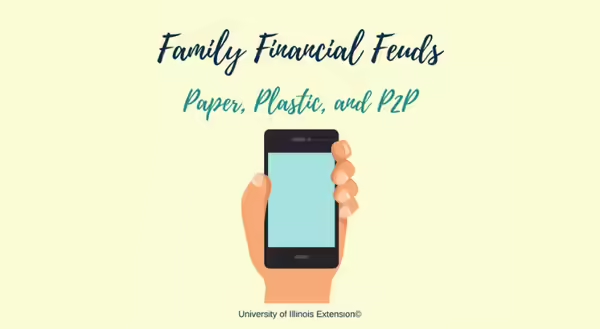
In August 2019, I wrote about transferring money to loved ones safely domestically and internationally through banks and financial companies on my Fearless Financial Future blog. I received a reader’s request to write about some of the other ways consumers are repaying each other or transferring money using mobile devices. In this article, I explore the relationship between banking and technology by focusing on peer-to-peer (P2P) mobile payment apps.
In a 2016 article, Lowry suggested that the projected growth of U.S. mobile payments would increase from $100 billion in 2014 to $800 billion in 2019. A Consumer Reports article stated that an estimated 79 million American adults used P2P payment services in 2018. This growing trend of using your mobile devices or third-party payment apps to transfer money has fueled my interest in understanding how they work. I was also interested in learning more about consumer protection guidelines for financial companies and consumers.
P2P mobile payments apps allow individuals to send money to friends, family, and others promptly. Instead of setting up transfers through bill pay, wires, or writing checks, friends can send payments for splitting the cost of dinner, hotel, rent, gifts, or other payments through these apps. The increase in smartphones and other mobile devices usage has played an important role in the development and availability of applications that provides services beyond the traditional modes of money transfers.
I have been exploring different types of P2P apps, and I had no reason to use one until recently. The request to write about this topic made me curious, and a friend got me to use one of these apps. I had a few questions when I was considering using this app:
- Why use a third-party way of payment? The simplest answer, it is convenient, an emerging financial technology, supports current consumer behaviors and lifestyles, and accessible to millions.
- I also questioned how these apps make money. I asked people who have been using these apps for years; I looked up these companies online, and read consumer reports and reviews. I found out that some apps earn profits through transaction fees (e.g., for immediate deposit of funds into a bank account) and charging businesses to use the app.
This trend also poses new challenges for consumer protection. Lowry (2016) explained that even though the adoption of mobile payments technologies support emerging consumer needs, it has raised questions about existing regulations protecting consumer rights. The Electronic Fund Transfer Act (EFTA), revised and updated, has provided guidelines and restrictions for companies that create applications for mobile money transfer. There are also state and federal guidelines. The Federal Trade Commission (FTC) and the Consumer Financial Protection Bureau (CFPB) have information and procedures that support consumer rights. While individual states have rules about money transmitter licensing for different peer-to-peer mobile payment applications, consumers are responsible for reviewing and assessing products that meet their money transfer needs and protect their financial information.
One basic example of P2P
- Download for free from the app store
- Sign-up with your real name
- Create a username and password
- Set-up Touch ID to support security authorize transactions (optional)
- Locate payee/payer by username
- Add debit card (optional)
- Add bank account information (bank and routing numbers)
- Can request from users
- Allow others to send to you
- Transfer deposits from app to your bank account
- A convenient way to go cashless
- A convenient way to transfer money to friends and family (without setting up a wire transfer, write a check)
- Money transfer is relatively quick
- Compatible with many banks and credit unions
- Free debit card option for using their balance at different retailers
- iOS and Android-friendly
Cautions
- Check social media permission; some apps might share information about your transactions
- These applications typically require a smart mobile device
- May include fees to send money using your credit card
- May include fees for immediate/instant deposit from the app to your bank account
- Maybe restricted to the U.S., check service policies
- Dangers of scams
- Send money only to people you know and trust
- Read trusted and reliable reviews
- Save and check that the information you have for your contacts are updated and correct
- Review their disclosure and documentation policies
- Talk with your teens about P2P
- Use stronger security options such as setting up a PIN or asks for confirmation for each payment
- Save customer service information in case you need to dispute errors or find out more information
- Keep your app up-to-date to prevent exploitation through malware
The shift from paper to plastic to digital ways of transferring money corresponds with the changes in consumer needs and advances in technology. Even though some of the earliest P2P started in the 2000s, it should be noted that this is still a relatively new area within financial technology, and this article provides a basic overview. To learn more about Peer-to-peer payment apps, please check out our latest Family Financial Feuds episode, Paper, Plastic, and P2P on SoundCloud.
Follow on Twitter @savefearlessly